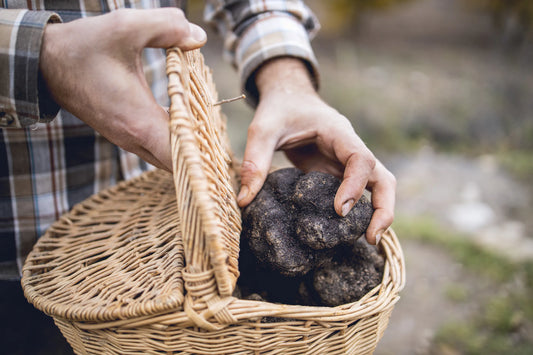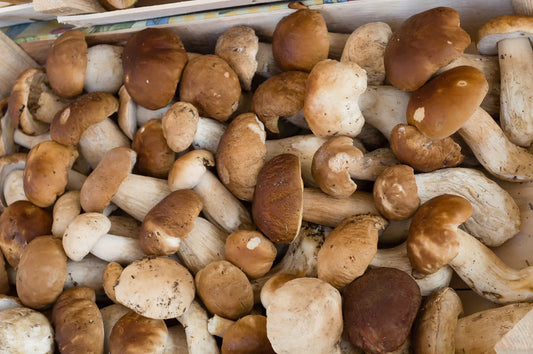
A Beginner's Guide to Cooking with Lion’s Mane Mushrooms
Erin RaserShare
They look like clouds drifting across a forest floor, but lion’s mane mushrooms are nothing if not bold. With cascading tendrils and a texture reminiscent of tender seafood, this underdog fungus challenges every notion you’ve held about cooking with mushrooms. Dive in and discover how these shaggy fungi can elevate a simple meal into an unforgettable experience.
What Makes Lion’s Mane Mushrooms a Must-Try Ingredient?
Few ingredients boast a texture quite like lion’s mane mushrooms. As you bite into its cascading strands, you’ll sense a springy resilience that mimics crab meat or scallops. Flavor-wise, it’s subtly sweet with earthy undertones—an ideal canvas for bold seasonings.
Beyond taste, lion’s mane carries a reputation for cognitive support and anti-inflammatory properties. Early studies on Hericium erinaceus have highlighted its potential to boost nerve growth factors, making it a favorite among functional mushrooms. Nutritionally, lion’s mane is low in calories and fat, while providing protein, antioxidants, and B vitamins—making it a brilliant addition to any balanced diet.
Seeking true quality? Opt for organic lion’s mane mushrooms sourced through sustainable farming. Supporting eco-friendly growers like Far West Fungi ensures you enjoy fungi that are free of pesticides and synthetic additives, while protecting delicate ecosystems.
Tips for Choosing and Storing Organic Lion’s Mane
- Look for freshness: Choose mushrooms that are firm, fluffy, and off-white with no yellowing or damp spots.
- Storage: Keep them in a paper bag in the refrigerator but NOT in the crisper drawer. This allows airflow, prevents moisture buildup, and keeps them pristine for up to five days.
- Buying sources: Farmers’ markets often carry hand-harvested batches, while reputable online purveyors like Far West Fungi guarantee a traceable supply chain.
Essential Steps for Preparing Lion’s Mane
Cleaning
Skip the soak. Instead, gently brush away dirt with a soft brush or towel. If stubborn debris remains, simply trim it off (it is most likely certified organic substrate).
Slicing & Tearing
- For a “scallop” texture, cut into thick, circular medallions.
- For stir-fries or soups, tear along natural fibers into ribbons that soak up sauces beautifully.
Pre-Cooking
Blanching or steaming for two minutes removes excess moisture and enhances tenderness. Pat dry thoroughly before pan-frying for golden, crispy edges.
5 Simple Lion’s Mane Recipes to Try
Here are five easy ways to get started with lion’s mane mushrooms in your kitchen:
-
Pan-Seared “Scallops”
Slice mushrooms into ¾-inch rounds and pat dry. Season with salt, pepper, and smoked paprika. Heat olive oil in a skillet over medium-high heat and cook 3–4 minutes per side until golden brown. Finish with lemon juice and chopped parsley. -
Creamy Mushroom Soup
Sauté the onions and garlic in butter until translucent. Add torn lion’s mane and cook until lightly browned. Pour in vegetable broth, simmer for 10 minutes, then blend until smooth and silky. Stir in cream or coconut milk. Top with thyme and cracked pepper. -
Crispy Mushroom “Crab” Cakes
Mix shredded lion’s mane with breadcrumbs, an egg, Dijon mustard, and chives. Form into patties, chill for 15 minutes, then fry in oil until golden brown. Serve with aioli or tartar sauce for a playful seafood illusion. -
Hearty Stir-Fry
In a wok, stir-fry mushrooms with bell peppers, snow peas, and scallions. Toss with a glaze of soy sauce, rice vinegar, honey, and chili flakes. Garnish with sesame seeds and cilantro. -
Garlic Butter Mushrooms on Toast
Melt butter with garlic in a pan. Add torn lion’s mane and cook until golden. Spoon over toasted sourdough, drizzle with more butter, and finish with Parmesan or nutritional yeast.
Flavor Pairings and Serving Strategies
- Herbs & Spices: Rosemary, tarragon, and smoked paprika highlight natural sweetness.
- Proteins & Grains: Pair with grilled fish, tempeh, quinoa, or wild rice.
- Beverages: Sauvignon Blanc cuts richness, a hoppy IPA enhances earthiness, and oolong tea adds a smoky complement.
Chef-Level Hacks for Lion’s Mane
- Dehydrate & Powder: Use in sauces, rubs, or smoothies.
- Infused Oils & Butters: Capture aromas for drizzling or spreading.
- Complex Sauces: Fold into demi-glace or velouté for gourmet depth.
Troubleshooting Common Mishaps
- Soggy Texture: Squeeze out moisture after blanching and use a hot, well-oiled pan.
- Bitter Flavor: Avoid overcrowding—cook in batches for even browning.
- Rubbery Centers: Extend cooking time by 1–2 minutes until tender.
Next Steps on Your Lion’s Mane Journey
From its seafood-like bite to its brain-boosting potential, lion’s mane mushrooms redefine what fungi can be. You’ve learned sourcing tips, prep tricks, and approachable recipes—now it’s your turn to experiment.
Embrace the challenge. Explore Far West Fungi’s organic lion’s mane mushrooms and discover new ways to turn this shaggy marvel into culinary magic.




